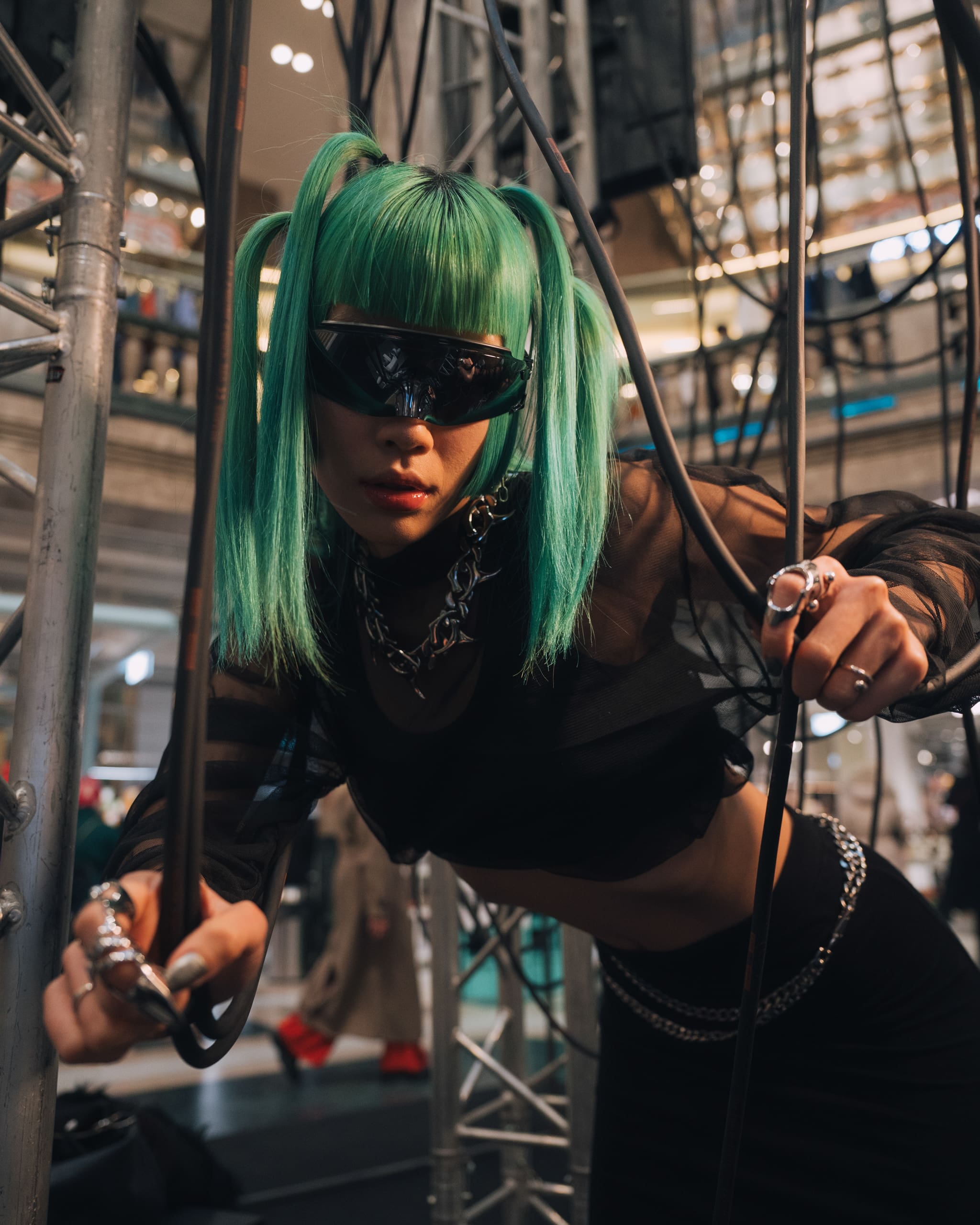Alyy Space at the Web3 Fashion • The Origin Story exhibition. Photo by Andrew Barber
In an exclusive interview, Lorenzo Albrighi and Eliana Kuo, co-CEOs and founders of SPIN by lablaco, share the makings of “Web3 Fashion • The Origin Story,” the biggest meta-retail event to date.
Held at Galeries Lafayette Champs-Élysées from January 4-26, 2023, the “Web3 Fashion • The Origin Story” exhibit by SPIN was the largest meta-retail gathering to date, attracting 230,000 visitors in three weeks—and it was born out of a two-year process of selecting brands and building the technology.
In an exclusive interview with Vogue Philippines, Eliana Kuo, co-CEO and founder of SPIN by lablaco, says that the exhibition’s concept came to her when she was walking on the streets of Paris. With fashion week having just concluded, she observed how fashion show advertisements were being discarded. “I took a picture while someone was tearing down a poster. Then we were thinking, ‘How we can turn this Web2 waste—using this Web3 technology—to make it something valuable?’”
In a matter of weeks, with the support of their main partners Kering, Meta, and Crypto.com, this seed branched out into a full-fledged showcase of three parts: The Dream, New Perspective, and Come to Life.
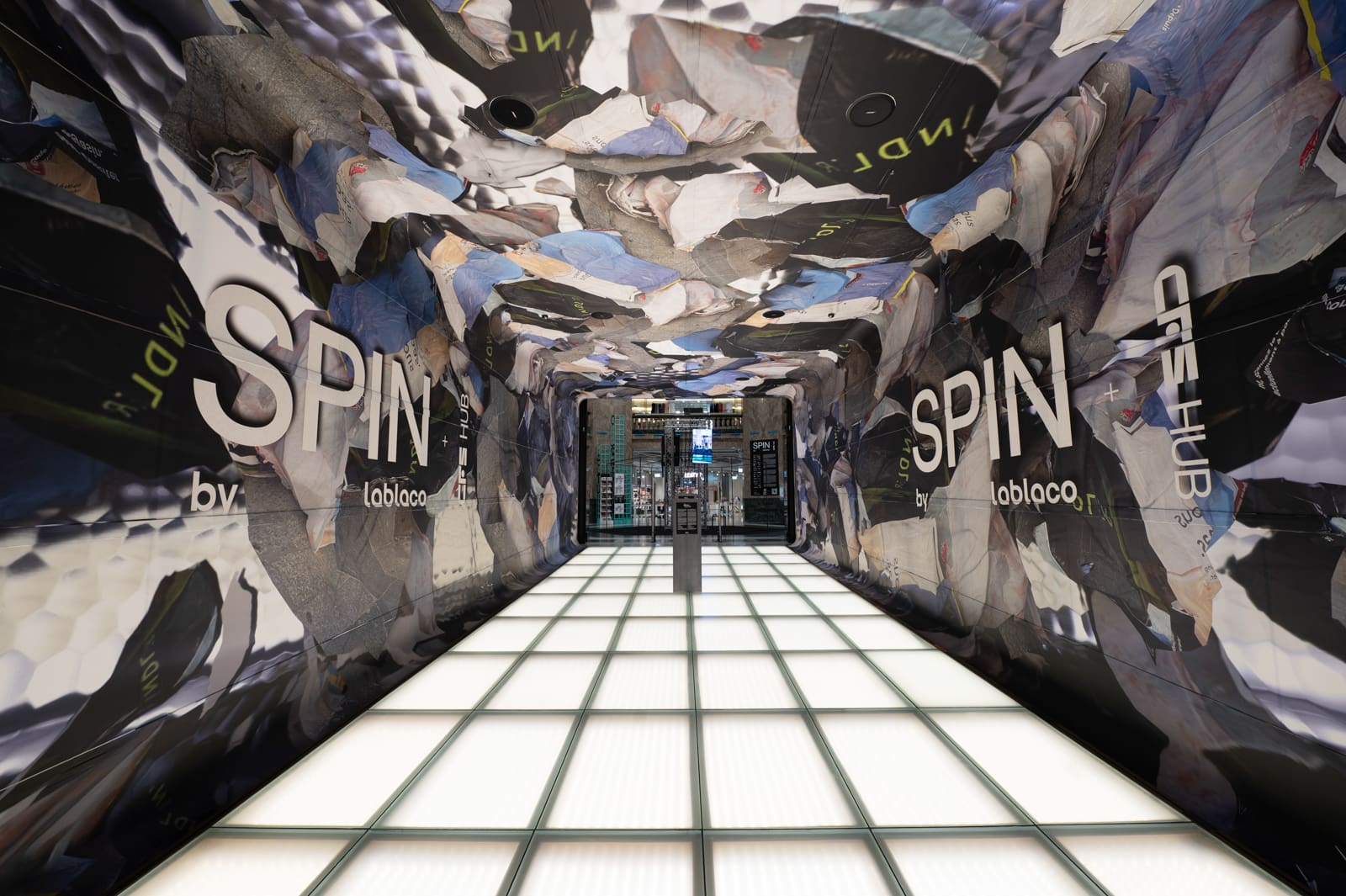
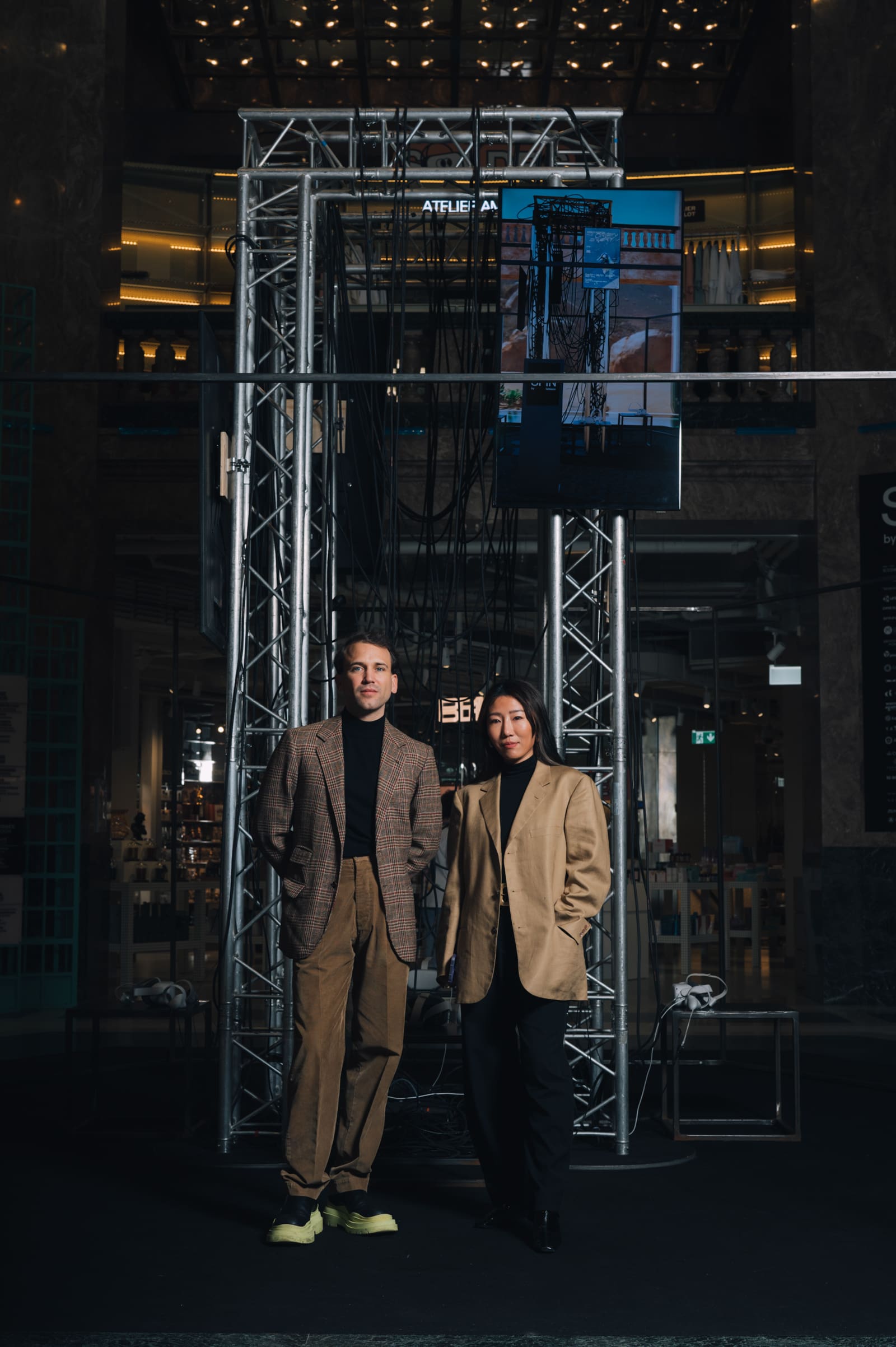
Fashioned by Technology
To enter the exhibition, you must pass through a tunnel covered in images of crumpled up posters. Aptly titled The Dream, this first part of the exhibition symbolizes the creative aspirations of designers which serve as an impetus to create. And later on, how these creations are discarded due to fashion’s prevailing linear economy that inevitably ends in waste. Lorenzo Albrighi, SPIN by lablaco’s co-CEO and founder, suggested that they make the tunnel 3D and turn it into an NFT, effectively demonstrating how Web3 can transform Web2 byproduct into something new and lasting. When the tunnel is scanned, Eliana shares, you can actually see these 3D objects moving all over.
Visitors step into New Perspective, the exhibit’s second part, once they emerge from the tunnel; from the debris of Web2. They then find themselves on a hexagonal floor where they can experience virtual reality (VR). Once they put on a Meta Quest VR headset, they will find themselves in the same hexagonal space, but no longer in Paris. They will find themselves standing on barren land.
“You’ll see the same space, but in the desert. You change your perspective. We want to let the visitors experience how you can use new technology to see things differently,” says Eliana.
Here, they can try on fashion items curated by 37 independent designers in conjunction with CFS HUB, an acceleration program under lablaco. From day one, narrates Lorenzo, its goal has been to “accelerate the transition to a digitized and connected circular economy collectively.”
The 12-month program provides select designers with technology, materials, and advisory, as well as free access to digital twins via partnerships with digital fashion houses and SPIN’s IoT (Internet of Things) label printers (otherwise known as the industry’s first NFT label printer). CFS HUB has also garnered the support of Kering, the parent group of global brands like Gucci, Bottega Veneta, and Balenciaga, who provides designers with sustainable, high-technology biotech fabrics.
Additionally, the co-CEOs and founders are excited to tell Vogue Philippines that they’re launching an RFID feature this month, which eases brands’ inventory management and product tracking, among other things. “There’s a lot of unlocking potential that comes with RFID technology,” Lorenzo shares of their latest tech.
Finally, past the VR space is the third and last exhibition segment, Come to Life. A large installation, it’s composed of 24 screens displaying CFS HUB wearables, and QR codes that lead to their respective product pages on SPIN. As an augmented reality (AR) experience, visitors are able to view and purchase these clothes and accessories as both physical and digital assets.
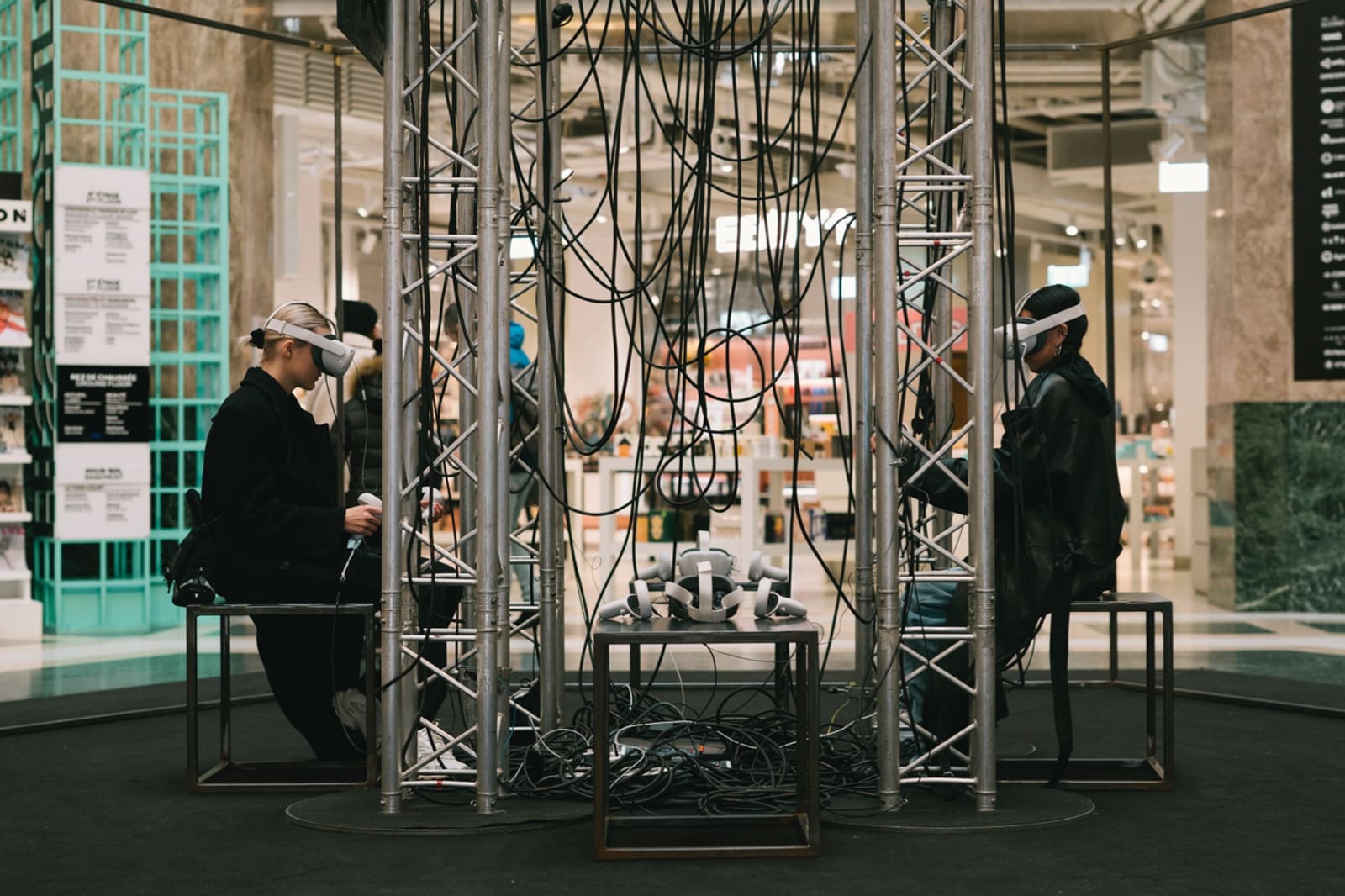

Re-Molding Retail
More than its forging of connections between Web2, Web3, and fashion, the exhibit is a peek into how Web3 technologies can transform the traditional retail experience. Eliana describes meta-retail as the experience of walking into a store, from anywhere in the world, through VR goggles. Compared to Instagram shops where consumers rely on flat images to see a product, meta-retail introduces a 3D shopping environment. Lorenzo tells Vogue Philippines that they have a system that enables you to have a digital twin with a one-to-one scale of a real human. This means that garment try-ons can now be done remotely.
“At the moment, we are working on accurate sizing technology, as our goal is to have an accurate digital twin of ourselves with measurements that can allow for true virtual try-on on SPIN,” he expounds. “It really provides a practical way of trying on sizes in a realistic way, so you can see how it would actually fit you in the physical world.”
lablaco focuses on “phygital” (physical plus digital) goods, which means that in a single purchase, one receives both a physical product and its digital twin on SPIN. In conjunction with this model, lablaco is committed to a made-to-order system to uphold environmental sustainability.
“The interesting thing about meta-retail is if you notice, we don’t have any physical product in the store. So we already activate the marketing promotion for all the designers and garments without producing anything,” says Eliana.
When a product is virtually launched in advance of its physical production, designers are able to test it out with the community and gather information. Which clothes are people engaging with the most? Why does this design have the most try-ons? Which garments are frequently purchased together? Designers now have concrete data to make better-informed design and production decisions.
Additionally, the virtual aspect of phygital NFTs is advantageous to the bespoke framework. Lorenzo explains, “I would need to wait for the product to come to me after months, but in the meantime, with digital you can already try on the garments in SPIN VR, you can share it on social media. People can already experience fashion without the physical fashion being there.”
These efforts have certainly resonated with the exhibit’s attendees: they counted 3.9 million AR try-ons, and 99 percent of those who purchased an NFT had never owned one before. “I would say the [remaining] one percent is mainly people from the industry that we invited,” Lorenzo says with a laugh.
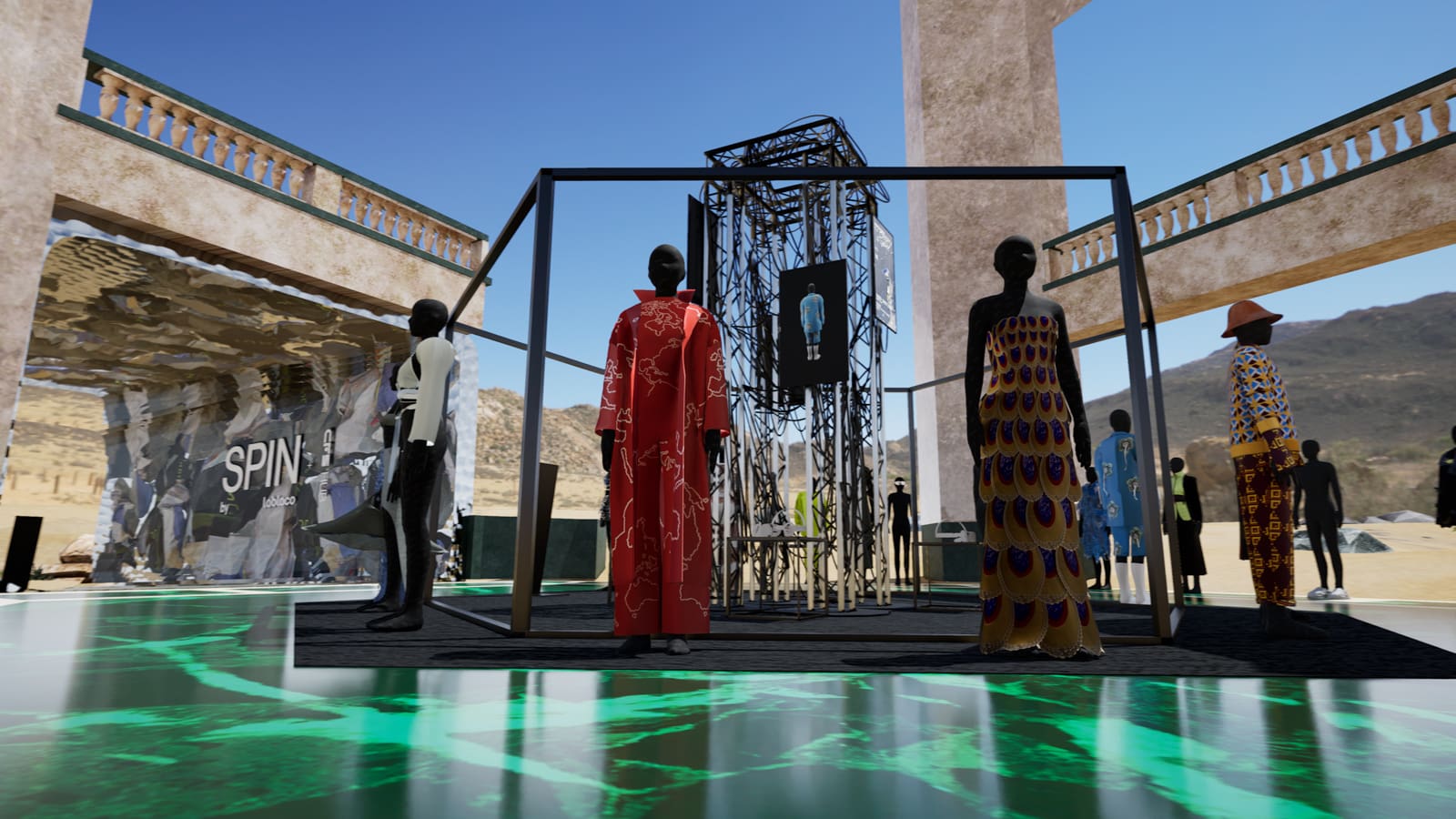
New Lives
True to their circular advocacy, SPIN’s exhibit was mounted using only upcycled and recycled materials. Using recycled metal from CFS HUB’s 2019 exhibition, they built VR and AR stations for the latter two parts of the exhibit. Meanwhile, the screens for the Come to Life section were vintage from all over the world, sourced from a boutique on one of the last streets of Paris’ Chinatown. Eliana is thoughtful when she says, “Everything stays in the loop.”
SPIN’s innovative exhibit pulled the appreciation of the Grand Palais Éphémère’s head of innovation, who invited them to showcase at an event in the building. Lorenzo fondly muses, “That was really nice to see that it was actually seen as an art installation instead of a commercial gig, which was really what we were looking for.”
Lorenzo and Eliana aim for the installation to start touring around the world as both an art piece and educational vehicle for empowering Web3, young designers, and a circular economy. The exhibit was a collaborative endeavor, and they want these team efforts to manifest into something bigger than all of them.
“By ourselves, none of us could do this, you know,” Lorenzo asserts. “We couldn’t do it, the designers couldn’t do it, and no one could do it by themselves. So I think that’s a great example of what the community can do together to achieve this kind of impact when forces are joined. It’s just a beautiful thing to see.”
